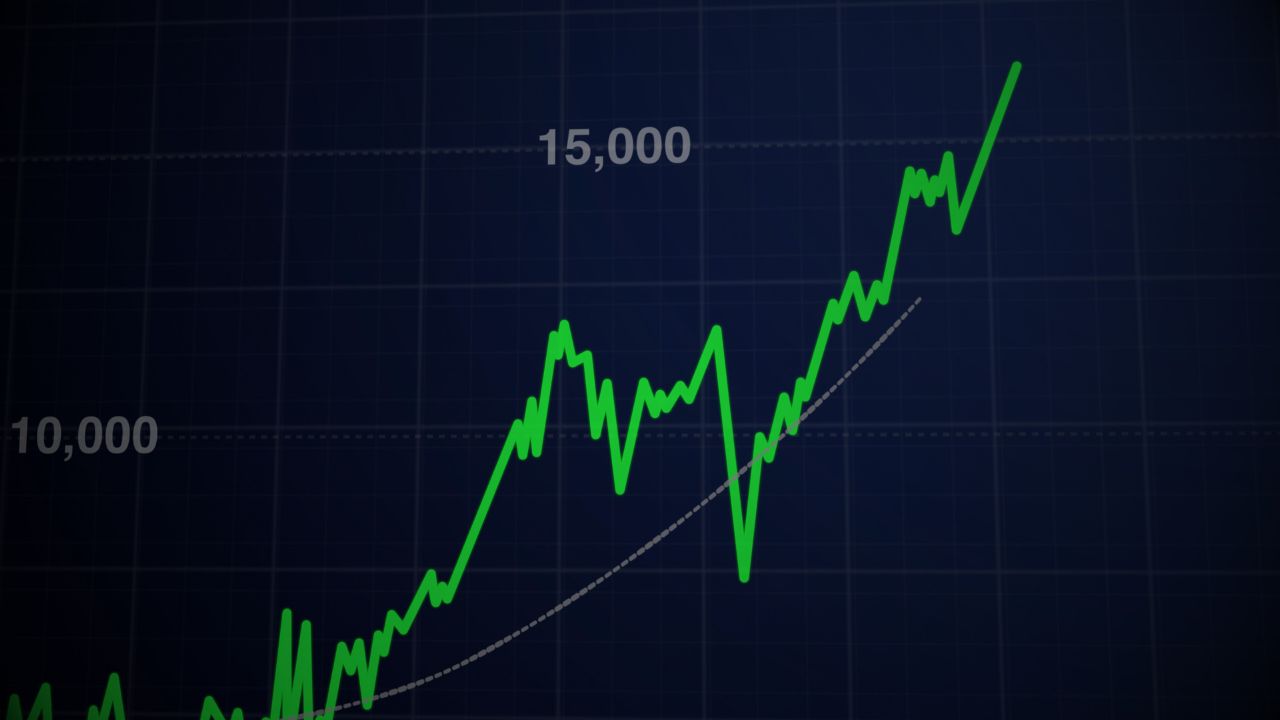A Long Calendar Spread is a neutral options strategy that capitalizes on time decay and volatility, rather than focusing on the movement of the underlying stock. It’s created by simultaneously buying and selling two options of the same type (calls or puts) but with different expiration dates.
The primary goal is to profit from time decay while also benefiting from expanding volatility.
What Is a Long Calendar Spread?
A Long Calendar Spread, sometimes called a “Horizontal Spread,” involves buying and selling two options of the same type (either calls or puts) with the same strike price but different expiration dates. It’s created by selling the shorter-term option while simultaneously buying the longer-term option.
The net result is a debit (or cost) to set up the spread because longer-term options typically cost more than short-term options. As the short-term option decays faster than the long-term option, the overall value of the spread increases, ideally resulting in a profit when the short-term option expires.
Breaking it down step by step:
- Selling a Short-Term Option: Start by selling a near-term option on the chosen stock. This is usually at-the-money (ATM) or slightly out-of-the-money (OTM), depending on your outlook. The main intention here is to take advantage of the rapid time decay of near-term options, allowing you to potentially collect the entire premium from this short option as it approaches expiration.
- Buying a Longer-Term Option: Simultaneously, buy a longer-dated option on the same underlying asset, with the same strike price as the short-term option. This long option acts as a hedge against significant price movements in the underlying asset and benefits from any increase in implied volatility.

Potential Risks and Rewards
As discussed, the primary objective is to capitalize on the differential time decay between the short-term and long-term options. If the underlying stock price remains near the strike price of the short-term option at its expiration, the spread will benefit from the decay of the shorter-term option while still holding the value of the longer-term option.
However, significant moves in the stock, especially if they occur quickly, can adversely impact the spread. The max risk will be defined at the total cost of the spread.
- Maximum Profit: The maximum profit is somewhat variable, primarily determined by the decay of the short option and any increase in implied volatility. Ideally, it’s realized if the underlying stock is right at the strike price of the options when the short-term option expires.
- Maximum Loss: The maximum loss is the initial debit paid to create the spread (i.e., the cost of the long-term option minus the credit received from the short-term option). This would happen if, at the expiration of the short-term option, the stock has moved significantly away from the strike, rendering both options worthless or if the longer-term option experiences a significant decrease in implied volatility.
Real-Life Examples
To see how it works in practice, let’s go through a few real-life examples and potential outcomes:
Example 1: Long Calendar Spread on Apple
Let’s assume you expect very little movement in Apple stock, which is currently trading at $180. You decide to place the following trade:
- Buying Long-Term Option: You purchase a call option with a strike price of $180 expiring in six months for a premium of $8, costing $800 for one contract (100 shares).
- Selling Short-Term Option: Simultaneously, you sell a call option with the same $180 strike but expiring in one month for a premium of $3, receiving $300 for one contract.
The result is a net debit of $500 ($800 paid – $300 received).

Before we go through a few scenarios, keep in mind these are just examples. Calendar spreads don’t have a defined max profit and any potential profit will depend greatly on the value of the long option. Let’s explore a few possible outcomes:
- Outcome A (Sideways Movement): Apple’s stock remains close to $180 by the short option’s expiration. The short-term option expires worthless, and you retain the $300 premium. The long-term option has decayed slightly but still retains most of its value.
- Outcome B (Slight Bullish Move): Apple’s stock rises to $183 by the short option’s expiration. Your short option is now valued at $3, while the long option is now $9.50. This results in a profit of $1.50.
- Outcome C (Significant Down Move): Apple’s stock drops to $165. The short option expires worthless, while the long option falls to a value of $6. The result is a net loss of $200.
Again, this is only for example purposes. The actual profit or loss would depend on the price of the long call which will vary based on volatility.
Example 2: Long Calendar Spread on Tesla
For this next example, let’s assume you expect very little movement in Tesla, which is trading at $220 per share. Looking at the stock’s current volatility, you see it’s significantly lower than it’s historical range. Expecting volatility to rise you place the following trade:
- Buying Long-Term Option: You purchase a call option with a strike price of $220 expiring in six months for a premium of $28, leading to a total cost of $2,800 for one contract (100 shares).
- Selling Short-Term Option: You then sell a call option with the same $220 strike but expiring in one month for a premium of $8, receiving $800 for one contract.
Your net debit for initiating the spread is $800 ($2,800 paid – $800 received).

Fast forwarding one month, let’s look at a few potential scenarios:
- Outcome A (Sideways Movement): Tesla’s stock hovers around $220 when the short option expires. This option becomes worthless, letting you keep the $800 premium. Your long-term option has also decayed but still has a value of $25. The result is a profit of $500.
- Outcome B (Down Move): Tesla’s stock drops to $217 by the short option’s expiration. The short-term option expires worthless, and you retain the $400 premium. The long-term option loses value due to the stock price decline, falling to $23. The result is a profit of $300.
- Outcome C (Down Move With Volatility Increase): Assuming the same down move, Tesla is now $217 a share. However, volatility has also begun to increase as expected. The short-term option expires worthless, while the long option retains a larger portion of its value due to the rise in volatility. At expiration the long option has a value of $26, resulting in a total profit of $600.
Key Points to Remember
Here are a few of the most important points to remember when trading calendar spreads.
Role of Time Decay
Time decay, or “theta,” represents the rate at which an option’s value decreases as it nears its expiration. In a long calendar spread, a trader combines two options with the same strike price but different expiration dates: a short-term option they sell and a longer-term one they buy.
However, both options decay at different rates. The short-term option is more sensitive to time decay and loses value faster as it approaches expiration. Meanwhile, the longer-term option decays at a slower rate, thus allowing them to profit from the difference.
Role of Volatility
Implied volatility is a forecast of the expected movement in the underlying stock price. As a general rule, when volatility increases, the value of options tends to rise. This effect is often more pronounced for options with longer expiration dates because they possess more time value, making them more sensitive to volatility changes. This sensitivity is often measured by an option’s “vega.”
In the context of a long calendar spread, a rise in volatility will usually be beneficial. The longer-dated option, which you own, tends to increase in value more significantly than the shorter-dated option you sold. This differential can lead to a potential profit. On the flip side, a decline in volatility could hurt the position.
Risk of Early Assignment
Every option contract provides the holder (the buyer) with the right to exercise the contract. When they choose to exercise this right, the person on the other side of the trade (the option writer or seller) is “assigned” and must fulfill the obligations of the contract. This means they may be required to buy or sell the underlying asset at the contract’s strike price.
Even though options can be exercised at any time prior to expiration, early assignment is more the exception than the rule. However, in certain circumstances, it becomes more probable.
Triggers for Early Assignment
- Ex-Dividend Dates: One of the most common scenarios in which early assignment becomes likely is when the underlying stock is about to go ex-dividend. If you’re short an in-the-money call option, the holder might exercise it to capture the dividend, particularly if the dividend amount exceeds the remaining extrinsic value of the option.
Avoiding Early Assignment
- Closing the Short Call: If you anticipate the possibility of early assignment due to an upcoming ex-dividend date or any other factor, one of the most straightforward actions is to simply buy back (close) the short call. This eliminates the risk of assignment altogether.
- Rolling the Option: Another tactic is to “roll” the short option. This means buying back the current short option and simultaneously selling another option with a later expiration date. This makes the new option less likely to be assigned early due to the increased time value.
- Closing the Entire Calendar Spread: If you’re not bullish on the underlying asset or you see better opportunities elsewhere, you might choose to close the entire spread. This involves buying back the short option and selling the long option.
Managing an Unexpected Assignment
If you are assigned early, it’s not the end of the world. Here are two ways to manage the position once assigned.
- Exercising the Long Call: One option is to exercise the long call you hold in the calendar spread. However, this is generally not the recommended route as the long call likely still has extrinsic value (time value) that would be forfeited by exercising.
- Closing the Share Position and Long Option: If you’ve been assigned on a short call, you’ll now have a short stock position. To neutralize this, you can simply buy the shares back at the current market price. After doing so, you can either hold on to the long call (if you believe there’s potential for appreciation) or sell it to recover some of its remaining value.
FAQs
A calendar spread involves buying and selling two options of the same type (either calls or puts) on the same underlying asset, with the same strike price but different expiration dates. Typically, the near-term option is sold, and the longer-term option is bought.
It’s named “calendar” because the strategy takes advantage of the time decay between two different expiration dates, essentially profiting from the difference in time.
Calendar spreads are primarily neutral strategies, ideal for range-bound or sideways markets. However, they can be tailored for a bullish or bearish bias by choosing strike prices above or below the current price of the underlying asset.
Calendar spreads benefit from a rise in implied volatility since the longer-dated option will typically have a higher vega (sensitivity to changes in volatility) than the shorter-dated option.
While both involve options with different expiration dates, a diagonal spread combines options with different strike prices as well. Calendar spreads maintain the same strike price for both options.



